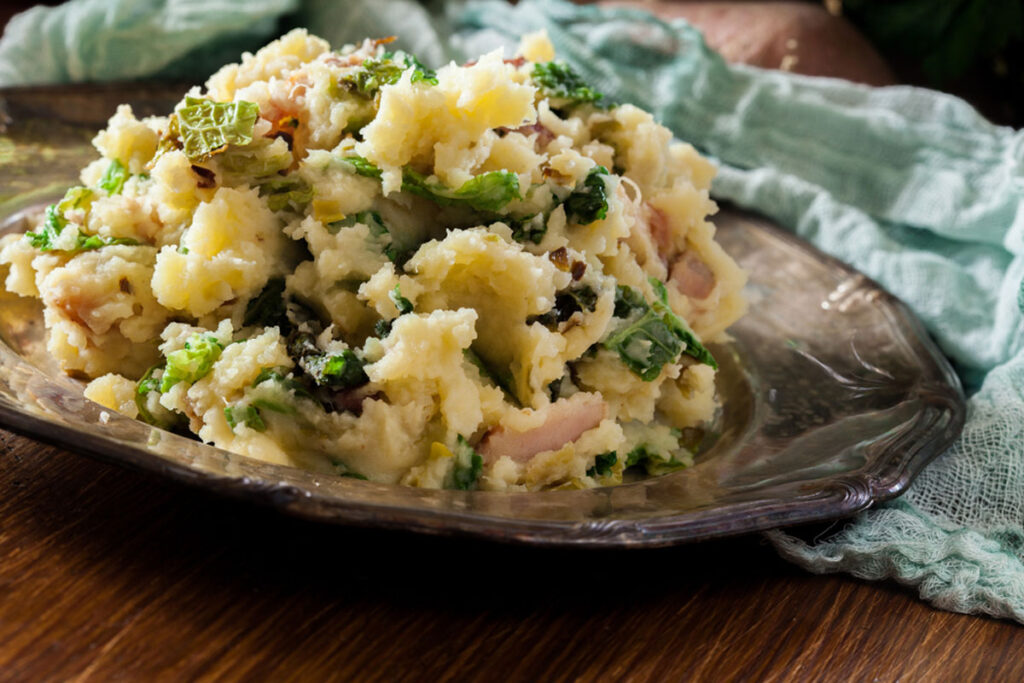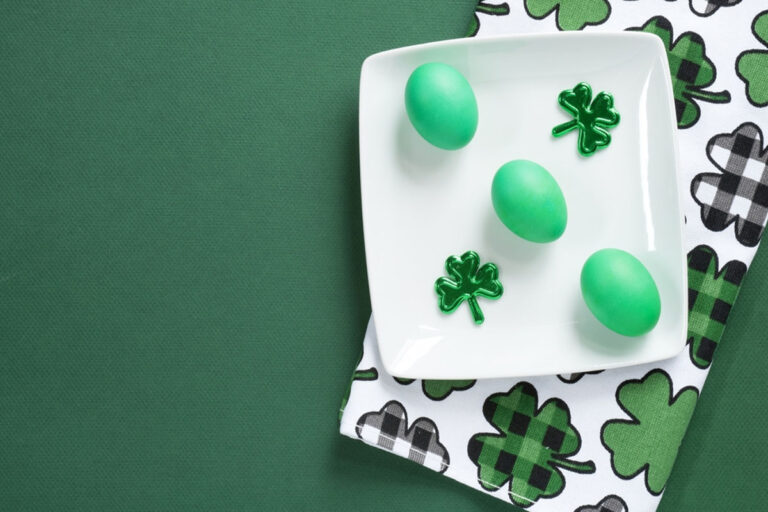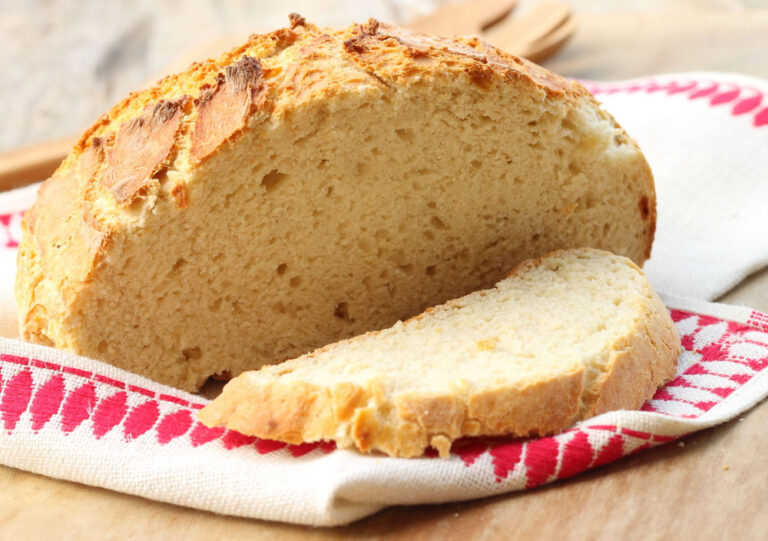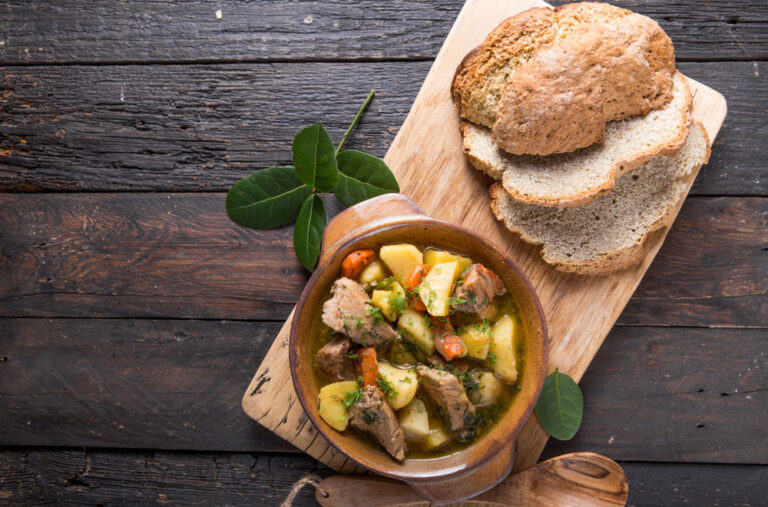Long ago, in the green hills and valleys of Ireland, the food was simple but nourishing. The people relied on what they could grow and catch themselves – potatoes, turnips, cabbage, and fish from the rivers and seas. It wasn’t fancy, but it was hearty and satisfying, the kind of food that warms you to the bones on a cold winter’s day.
As time went on, the cuisine of Ireland was influenced by the different cultures that passed through the country. The Vikings brought smoked fish and a taste for pickling, the Normans introduced new spices and meats, and the English brought tea and a fondness for afternoon tea.
But it wasn’t until the 19th century that Irish food truly began to evolve. The potato had become the staple crop of Ireland, and when the Great Famine hit in 1845, it devastated the country. But out of that tragedy came a renewed focus on the importance of Irish food, and a determination to make it more diverse and flavorful.
One of the great innovators of this time was the cookery writer and teacher, Agnes Jekyll. She championed the use of local, seasonal ingredients and introduced new techniques like baking and grilling. Her cookbook, “The Irish Kitchen,” became a bestseller and helped to popularize Irish cuisine throughout the country.
Today, Irish food is celebrated for its simplicity, honesty, and heartiness. From a hearty bowl of colcannon to a slice of warm soda bread, it’s the kind of food that makes you feel at home. There’s nothing quite like an Irish meal to bring people together and warm the soul.
Origins of Irish Cuisine
The origins of Irish cuisine are deeply rooted in the fertile soil and abundant waters of the Emerald Isle. In the verdant hills and valleys of Ireland, where lush landscapes stretch as far as the eye can see, early inhabitants relied on the bounties of nature to sustain themselves. With a climate conducive to agriculture and a coastline teeming with marine life, the people of ancient Ireland cultivated a diet centered around locally grown produce and freshly caught fish.
Potatoes, turnips, and cabbage emerged as staple crops, hearty and resilient enough to thrive in the Irish soil and weather conditions. These humble vegetables formed the foundation of many traditional Irish dishes, providing sustenance and nourishment to generations. Alongside these hearty vegetables, the rivers and seas yielded an abundance of fish, sustaining coastal communities and inland settlements alike.
The simplicity of early Irish cuisine reflected not only the practicalities of subsistence living but also a profound connection to the land and sea. Each meal was a celebration of the natural abundance that surrounded them, a testament to the resourcefulness and resilience of the Irish people.
As communities grew and interacted with neighboring cultures, Irish cuisine began to evolve, incorporating new ingredients and culinary techniques. Yet, at its core, the essence of Irish cooking remained true to its origins, grounded in the rhythms of nature and the traditions passed down through generations.
Cultural Influences on Irish Food
The culinary landscape of Ireland is a tapestry woven with threads of cultural influences from across the ages. Among the most significant contributors to the evolution of Irish food are the Viking, Norman, and English cultures, each leaving their mark on traditional Irish fare.
The Vikings, known for their seafaring prowess, arrived on the shores of Ireland in the 8th century, bringing with them a rich culinary heritage. They introduced techniques such as smoking and pickling, preserving fish and meats for long voyages at sea. This infusion of flavors transformed the Irish palate, adding depth and complexity to indigenous dishes.
Following the Viking Age, the Normans made their mark on Irish cuisine with their conquest of Ireland in the 12th century. With them, they brought a penchant for spices and exotic ingredients, enriching the culinary repertoire of the Emerald Isle. Spices like cinnamon, cloves, and nutmeg found their way into Irish kitchens, lending a touch of sophistication to traditional dishes.
Later, the English influence on Irish food would become profound, particularly during the centuries of English rule. English settlers brought with them not only their own culinary traditions but also a system of agriculture that reshaped the Irish landscape. Tea, introduced by the English, became a beloved beverage in Ireland, while the tradition of afternoon tea found its place in Irish culture, albeit with a distinctive Irish twist.
Despite these foreign influences, traditional Irish fare remained resilient, adapting and incorporating new ingredients while staying true to its roots. The result is a culinary tapestry that reflects the diverse cultural heritage of Ireland, where Viking smoked fish, Norman spices, and English tea coexist harmoniously with indigenous staples like potatoes and soda bread.

Revolutionizing Irish Cooking in the 19th Century
The 19th century brought about a significant turning point in the evolution of Irish cuisine, catalyzed by the devastating impact of the Great Famine. The potato, which had become the staple crop of Ireland, fell victim to a blight that ravaged the country’s fields, leading to widespread famine, death, and mass emigration.
Amidst the hardship and tragedy of the famine, a renewed focus emerged on the importance of Irish food and agriculture. The reliance on a single crop had proven disastrous, prompting a shift towards diversification and innovation in farming practices. Farmers began to explore alternative crops and agricultural methods, seeking resilience against future crop failures.
Simultaneously, the famine spurred efforts to alleviate hunger and improve nutrition among the Irish population. Relief organizations and government initiatives introduced new strategies for food production and distribution, aiming to address the immediate crisis while laying the groundwork for long-term sustainability.
The aftermath of the famine saw a renaissance in Irish cooking, fueled by a desire to reclaim and redefine the culinary identity of the nation. Cooks and chefs experimented with new ingredients and techniques, drawing inspiration from both indigenous traditions and international influences. The result was a fusion of old and new, as traditional Irish dishes evolved to embrace a broader palette of flavors and ingredients.
One of the most significant contributions to this culinary revolution was the work of Agnes Jekyll, a pioneering cookery writer and teacher. Jekyll championed the use of local, seasonal ingredients and introduced innovative cooking methods, such as baking and grilling, to Irish kitchens. Her influential cookbook, “The Irish Kitchen,” became a bestseller, inspiring generations of cooks to embrace creativity and experimentation in their culinary endeavors.
Overall, the Great Famine served as a catalyst for change, transforming Irish cooking from a simple, rustic cuisine into a vibrant and diverse culinary landscape. The resilience and ingenuity displayed in the face of adversity laid the foundation for the rich tapestry of flavors and traditions that define modern Irish cuisine.
Agnes Jekyll: Pioneer of Irish Culinary Innovation
Agnes Jekyll stands as a trailblazer in the realm of Irish culinary innovation, leaving an indelible mark on the landscape of modern Irish cooking. Born in the 19th century, Jekyll’s passion for food and cooking transcended the confines of her time, propelling her into the forefront of culinary innovation.
At a time when Irish cuisine was undergoing a period of transformation, Agnes Jekyll emerged as a champion of local ingredients and traditional cooking techniques. Drawing inspiration from the rich bounty of the Irish countryside, she advocated for the use of seasonal produce and locally sourced ingredients, emphasizing the importance of freshness and flavor in cooking.
Jekyll’s culinary philosophy was deeply rooted in a reverence for nature and a commitment to sustainability. She believed in the inherent goodness of simple, unadorned ingredients, and sought to celebrate their natural flavors through thoughtful preparation and presentation. Her approach to cooking was guided by a respect for tradition, tempered by a spirit of experimentation and innovation.
Central to Jekyll’s culinary ethos was her belief in the power of education and empowerment. As a teacher and writer, she sought to demystify the art of cooking, making it accessible to people from all walks of life. Her seminal work, “The Irish Kitchen,” served as a comprehensive guide to Irish cooking, offering practical advice, tried-and-tested recipes, and insights into the cultural heritage of the Emerald Isle.
Through her advocacy for local ingredients and culinary techniques, Agnes Jekyll played a pivotal role in shaping the modern Irish culinary landscape. Her influence continues to be felt today, as chefs and home cooks alike draw inspiration from her timeless recipes and timeless wisdom. In honoring her legacy, we celebrate not only her contributions to Irish cuisine but also her enduring legacy as a pioneer of culinary innovation.
Modern-Day Celebration of Irish Food
In modern times, Irish cuisine continues to captivate hearts and palates around the world, drawing on its rich heritage while embracing contemporary culinary trends. At the heart of its enduring appeal lies a celebration of simplicity, honesty, and a profound connection to the land.
Irish food is cherished for its unpretentious nature, rooted in the traditions of rural life and the rhythms of the seasons. From the rolling green hills to the rugged coastline, Ireland’s landscape informs its cuisine, offering a bounty of fresh, wholesome ingredients. Whether it’s tender lamb raised on lush pastures, succulent seafood caught in pristine waters, or hearty vegetables cultivated in fertile soil, Irish food reflects the natural abundance of the Emerald Isle.
Central to the modern-day celebration of Irish cuisine is its emphasis on authenticity and tradition. Recipes passed down through generations, steeped in folklore and nostalgia, are cherished for their ability to evoke a sense of homecoming. From hearty stews and comforting pies to indulgent desserts and freshly baked bread, Irish food speaks to the soul, offering comfort and sustenance in equal measure.
Yet, Irish cuisine is not bound by tradition alone. In recent years, a new generation of chefs has emerged, reinterpreting classic dishes with innovative twists and creative flair. Drawing inspiration from global culinary trends and techniques, they infuse traditional Irish fare with fresh perspectives, pushing the boundaries of tradition while honoring its essence.
Beyond the dining table, the modern celebration of Irish food extends to a thriving food and drink scene, encompassing bustling farmers’ markets, artisanal producers, and award-winning restaurants. Here, visitors and locals alike can sample the best of Irish gastronomy, from artisan cheeses and craft beers to artisanal chocolates and small-batch spirits.
In essence, the modern-day celebration of Irish food is a testament to its enduring relevance and universal appeal. Whether enjoyed in a cozy pub, a family kitchen, or a Michelin-starred restaurant, Irish cuisine continues to bring people together, nourishing both body and soul with its warmth, generosity, and unmistakable sense of home.



